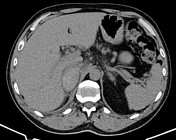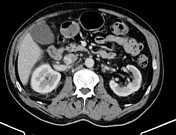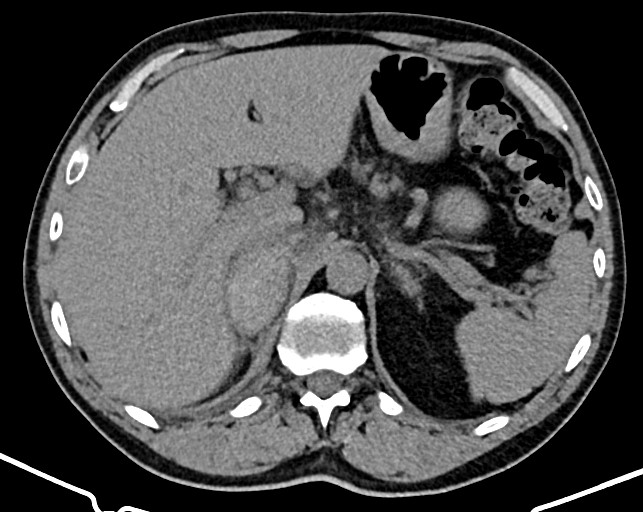Presentation
Three days of epigastric pain and vomiting. On apixaban for recent pulmonary embolism.
Patient Data

Stranding surrounding both adrenals was seen which appeared to be slightly hypoenhancing. The stranding extends posterior to the pancreas. An adrenal crisis or pancreatitis were included in the differentials.





Peri-adrenal stranding at the adrenal glands increased in size with areas of haemorrhage (particularly on the right). This was considered highly suggestive of bilateral adrenal haemorrhage / adrenal crisis / insufficiency.
Examination notes the known pulmonary embolism in both lower lobe branches. Bilateral pleural effusion was noted. Patchy areas of air space opacity was considered secondary to underlying infection or pulmonary haemorrhage/infarct.
Thrombus within the right adrenal vein (draining into the right renal vein), the left renal vein, and the distal left adrenal vein/lumbar veins.
Laboratory tests: Short synacthen test failed to show normal adrenal stimulation.
Final diagnosis: Bilateral adrenal haemorrhage with adrenal insufficiency.
Treatment: The patient started on hydrocortisone and fludrocortisone. Apixaban ceased, then clexane bridging, and finally, warfarin was initiated for ongoing PE/DVT treatment.
Case Discussion
Here is a case where CT findings were the first indication of an adrenal crisis. It was subsequently seen to progress to adrenal haemorrhage with adrenal insufficiency.




 Unable to process the form. Check for errors and try again.
Unable to process the form. Check for errors and try again.